How To Care For Your Fibreglass Pool
Fibreglass pools are an increasingly popular choice among homeowners due to their durability, low maintenance, and sleek, smooth finish. Unlike concrete or vinyl-lined pools, fibreglass pools have a non-porous surface that resists algae growth, which makes them easier to clean and maintain. However, like all pools, they still require proper care to ensure they remain in top condition for years to come. Whether you're a first-time pool owner or simply looking to improve the upkeep of your fibreglass pool, this guide will walk you through the key steps in proper pool care.
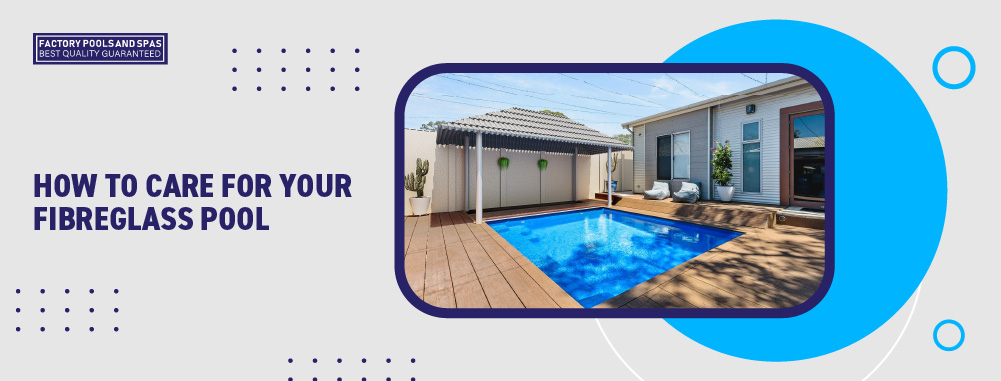
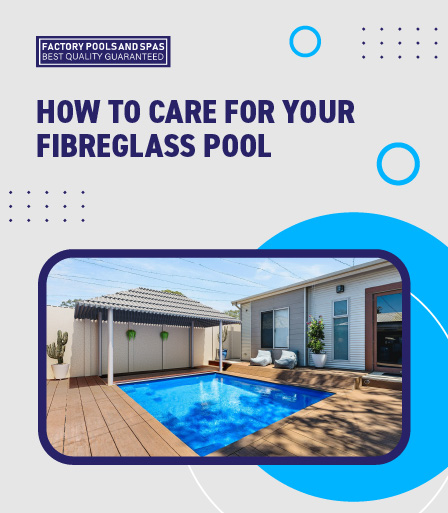
1. Regular Pool Cleaning
One of the most essential tasks in maintaining a fibreglass pool is regular cleaning. Despite the smooth surface of fibreglass, debris such as leaves, twigs, and insects can still accumulate in your pool. Here’s how you can keep your fibreglass pool spotless:
- Skimming: Use a pool skimmer net daily to remove floating debris. This helps prevent the debris from sinking to the bottom, where it can contribute to staining or clogging the filtration system.
- Brushing: Fibreglass surfaces are highly resistant to algae growth, but it’s still a good idea to brush the walls and floor of the pool once a week to remove any dirt or sediment that may accumulate. This also helps prevent the buildup of calcium deposits on the surface.
- Vacuuming: A pool vacuum is essential for removing dirt and debris from the bottom of your pool. Depending on the pool’s size and usage, it’s recommended to vacuum your fibreglass pool at least once a week, though you might need to do it more often during peak swimming season.
Maintaining the right chemical balance is crucial for both the longevity of your fibreglass pool and the health of the swimmers. Poor water chemistry can cause various issues such as algae growth, cloudy water, skin irritation, and even damage to the fibreglass surface.
- Test the Water Regularly: Invest in a good-quality pool water test kit and check the pool’s pH, alkalinity, and chlorine levels at least twice a week. The recommended pH level for a fibreglass pool is between 7.4 and 7.6, and the ideal alkalinity should be between 100 and 150 parts per million (ppm). Chlorine levels should be maintained between 1.0 and 3.0 ppm.
- Adjust the Chemical Levels: If the pH is too low (below 7.4), add pH increaser (sodium carbonate) to raise it. If it’s too high (above 7.6), add pH decreaser (sodium bisulphate) to lower it. For alkalinity, if the levels are too high, add an acid like muriatic acid; if they’re too low, use an alkalinity increaser.
- Sanitise the Pool: Chlorine is the most common disinfectant used to sanitise pools. You can use either chlorine tablets, liquid chlorine, or salt chlorinators (for saltwater pools). Chlorine helps to kill bacteria and maintain clear water. Keep in mind that overuse of chlorine can damage the fibreglass surface, so it’s important to monitor its levels closely.
- Shock Treatment: Periodically, especially after heavy pool use or a significant rainfall, you should shock the pool. This means adding a higher concentration of chlorine to the water to eliminate contaminants and restore balance.
2. Maintaining the Pool’s Water Chemistry
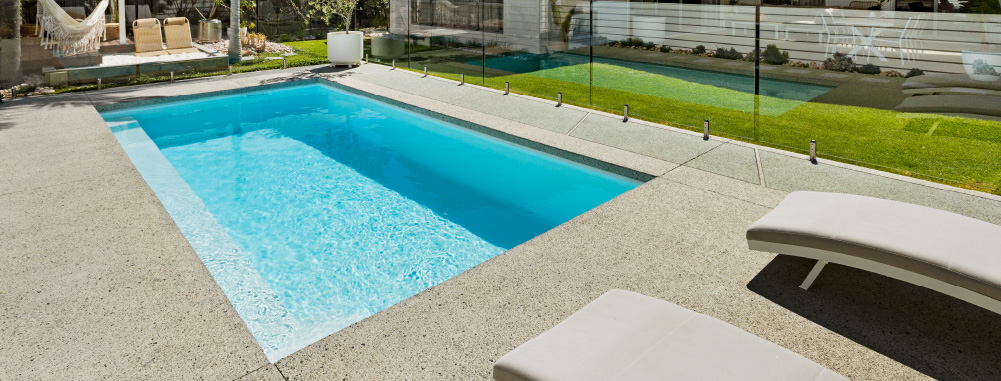
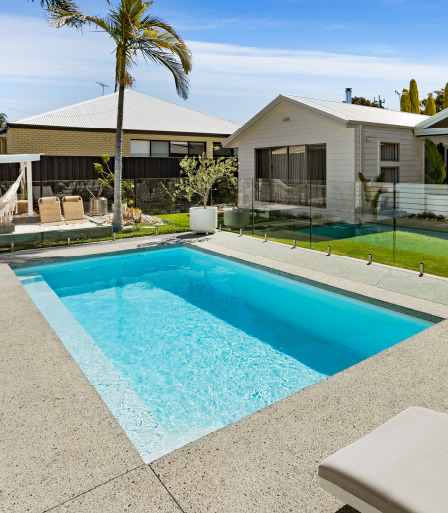
3. Balancing the Pool’s Water Level
Maintaining the right water level is crucial for ensuring the pool’s filter and pump function properly. If the water level is too low, it can cause the pump to run dry, leading to potential damage. On the other hand, if the water level is too high, it can result in the skimmer not working efficiently, causing debris to accumulate.
- Monitor the Water Level: The ideal water level should be halfway up the skimmer’s opening. If you notice the water level dropping due to evaporation or splashing, top it up with a hose. Be mindful of water restrictions in your area and adjust your usage accordingly.
- Prevent Overflow: While fibreglass pools are durable, excessive water levels can lead to overflows, potentially damaging the surrounding landscaping or decking. Ensure the pool’s overflow drains are functioning well, particularly after heavy rainfall.
4. Maintaining the Filtration System
Your pool’s filtration system plays a vital role in keeping the water clean and clear. Fibreglass pools are typically equipped with either a sand or cartridge filter. Regular maintenance of your filtration system ensures that the pool stays free of debris and the water remains chemically balanced.
- Check the Filter Regularly: It’s essential to check your filter system regularly for any signs of wear or damage. Ensure that it’s running properly, and if there’s a decrease in flow or pressure, it might be time to clean or replace the filter.
- Backwash Sand Filters: If your fibreglass pool uses a sand filter, it’s important to backwash the system regularly (every 1-2 weeks during peak season) to remove debris trapped in the filter. Follow the manufacturer’s instructions for backwashing procedures.
- Clean Cartridge Filters: If your pool has a cartridge filter, remove and clean the cartridges every 4-6 weeks. Soak the cartridges in a filter cleaner solution to break down oils and dirt, then rinse thoroughly before reinserting them into the filter.

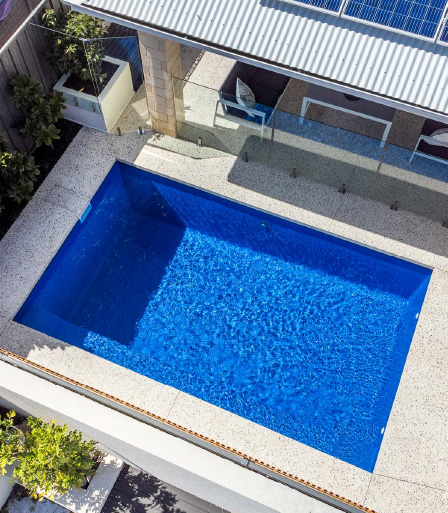
5. Addressing Stains and Scale Buildup
Over time, fibreglass pools can develop stains or scale deposits on the surface, particularly if the water chemistry is out of balance. Calcium buildup and mineral stains are common problems, but fortunately, they can be addressed with a little care.
- Remove Stains: If you notice brown or black stains, they could be caused by metals (like iron or copper) in the water. To remove these stains, use a specialised pool stain remover or a metal sequestrant, which helps to bind metals and prevent further staining. Be sure to follow the instructions carefully to avoid damaging the fibreglass.
- Prevent Calcium Scale: Calcium deposits can form on the walls of the pool if the pH or alkalinity is too high. To prevent calcium scaling, maintain proper water balance and regularly brush the pool’s surface. In the event of severe scaling, a descaling agent may be necessary to remove the deposits.
6. Winterising Your Fibreglass Pool
In Australia, many pools are used year-round, but if you live in a cooler region or don’t plan on using your pool during the winter months, it’s important to winterise your fibreglass pool to protect it from damage caused by freezing temperatures and weather-related debris.
- Lower the Water Level: Before closing your pool for the winter, reduce the water level to below the skimmer level to prevent any damage from freezing water.
- Clean the Pool Thoroughly: Clean your fibreglass pool thoroughly before closing it. This includes skimming, brushing, and vacuuming, as well as balancing the water chemistry.
- Cover the Pool: Invest in a high-quality pool cover to protect your pool from dirt, debris, and harsh weather during the winter months. Make sure the cover is securely fastened and check it periodically to ensure it remains intact.
7. Regular Inspections and Professional Help
In addition to your routine maintenance, it’s also a good idea to have a professional pool technician inspect your fibreglass pool periodically. They can check the pool’s structure, plumbing, and equipment for any signs of damage or wear and perform more advanced maintenance tasks.
Owning a fibreglass pool offers the benefit of a low-maintenance, durable swimming experience, but that doesn’t mean you can neglect its care altogether. By performing regular cleaning, maintaining the correct water chemistry, looking after the filtration system, and addressing stains or scale buildup, you’ll keep your pool in pristine condition for years to come. Regular inspections and professional advice will also help you spot any potential problems before they become costly repairs. With these simple steps, you can enjoy a sparkling, healthy pool for many summers ahead.

